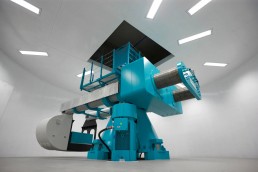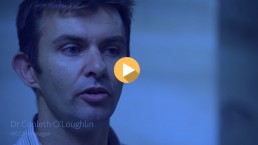Specialist Node > Experiments in Variable Gravity
Through strong national and international partnerships, our researchers play leading roles in microgravity and hypergravity research.
Microgravity experimentation
Our microgravity research programme, led by Associate Professor Danail Obreschkow, regularly partners with the European Space Agency (ESA) to conduct experiments aboard the Airbus A310 Zero G, the world’s largest suborbital microgravity facility.
These parabolic flights offer repeated phases of 20s-25-s of “microgravity” (~0.001g), as well as comparable phases of hypergravity (~1.8g). Depending on experimental design, it is also possible to request intermediate levels of gravity, such as lunar (0.17g) and martian (0.38g) gravity.
University of Western Australia (UWA)-led research has collected over ten hours of microgravity via such flights, mainly dedicated to experiments aiming to unravel the mysterious physics of collapsing cavitation bubbles (see video below right).
UWA Professor and private pilot Dongke Zhang has also led drop tower experiments, which offer even better levels of microgravity (~0.000001g) than parabolic flights but exhibit shorter phases of microgravity (<10s) and high accelerations (>5g) before and after.
We can offer expertise on the design and conduct of microgravity experiments, as well as essential partnerships for accessing parabolic flight capabilities and drop tower facilities.
Why conduct scientific research on questions that lack an obvious purpose?
Danail Obreschkow argues that science has a long and proud history of discovery from fundamental research, powered by curiosity more than prospects. “We don’t always know the destination, but some roads look very exciting … and sometimes such roads lead to astounding places!” In this talk, Danail explains his research on the collapse of bubbles in microgravity and shares the feeling of flying on parabolic flights with the European Space Agency. It’s an endeavour that might seem inapplicable at first, but it has expanded our knowledge on highly concentrated energy – and the applications could include large environmental and medical benefits.
Hypergravity experimentation in centrifuges
Our researchers maintain strong links to the National Geotechnical Centrifuge Facility (NGCF), hosted at the Centre for Offshore Foundation Systems at UWA and directed by Associate Prof Conleth O’Loughlin. The NGCF is the largest geotechnical centrifuge facility in the world, and the only such facility in Australia.
The NGCF centrifuges are mainly used to simulate the response of engineering systems at or within the seabed, but are also used in other scientific disciplines where enhanced gravity is required.
The NGCF hosts three large centrifuges: a 1.2m drum centrifuge, as well as 3.6m and 10m diameter beam centrifuges, for hypergravity experiments up to 350g.
Introduction to the National Geotechnic Centrifuge Facility (NGCF)
The National Geotechnical Centrifuge Facility is an integral part of the ARC Centre of Excellence for Geotechnical Science and Engineering. It includes the University of Western Australia, the University of Newcastle, the University of Wollongong, the University of Queensland, Monash University and the University of Adelaide. The NGCF is hosted at the Centre for Offshore Foundation Systems at the University of Western Australia.



